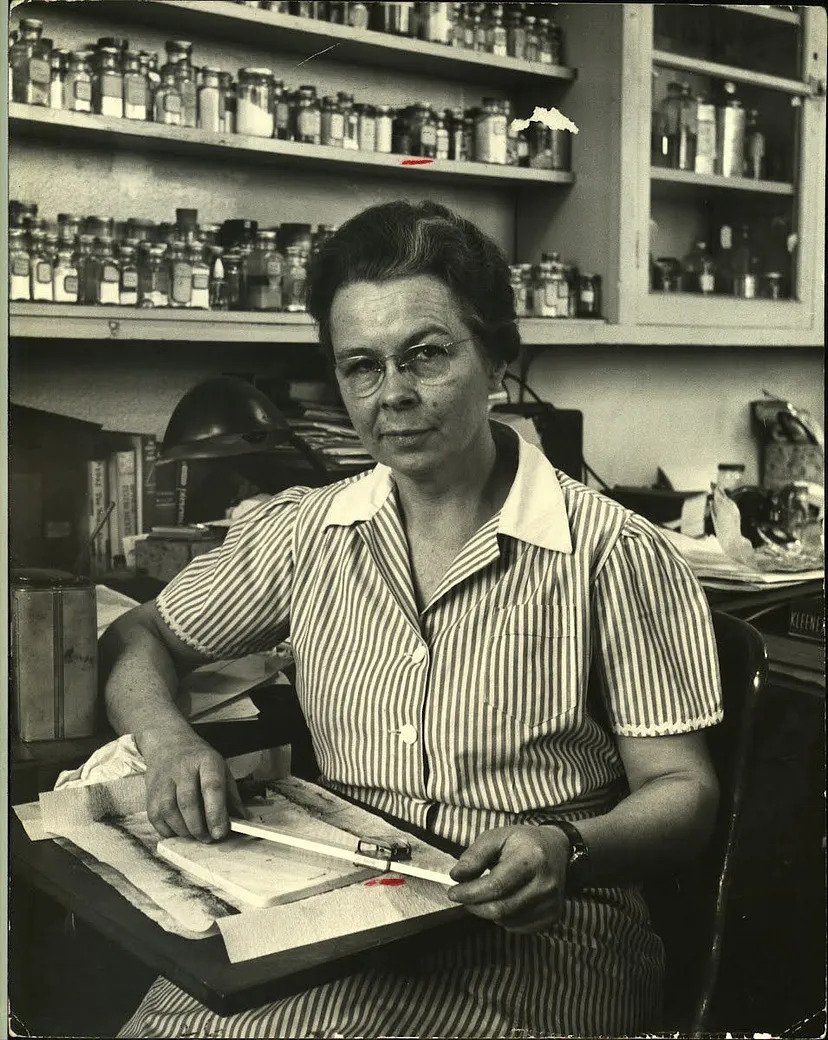Episode 89: Edith Clarke
Edith Clarke was born on February 10, 1883 in Ellicott City, Maryland. Edith was orphaned at 12 years old and raised by an uncle and older siblings. She received an inheritance at 18 and in 1904 when she was 21, she decided to use the inheritance towards education. She enrolled at Vassar College in Poughkeepsie, New York. She graduated with a BA in math and astronomy in 1908. She heads to San Francisco to teach math and physics. Then she goes to Marshall College in Huntington, West Virginia to teach for 2 years. In 1911 she enrolled at University of Wisconsin in Madison to study civil engineering. The summer after her first year at Wisconsin she worked at American Telephone and Telegraph Company (AT&T) in New York City as a computer. She loved it so much she took a full time job there. She moved up and was a manager of women who did calculations for the Transmission and Protection Engineering Department of AT&T during WWI. In 1915, she took night classes in radio at Hunter College and electrical engineering at Colombia. In 1918, she enrolls full time at MIT to study electrical engineering. In 1919, she graduated with her Masters in Electrical Engineering. She was the first woman to hear that degree from MIT. Sadly, it was tough for a woman to get an engineering job so when she was offered a job at General Electric in Schenectady, New York in computing, she took it. In her spare time she invents a graphing calculator. It was called the ‘Clarke Calculator’. She applied for a patent for it and was approved in 1925. After filing her patent she went to teach for a year in Constantinople Women’s College in Turkey. GE missed her so much they offered her an engineering position back in NY making her the first professional female electrical engineer in the US. She also took out a patent for a voltage regulator for long-distance power transmission lines in 1927. In 1926 she was the first woman to present a paper to the American Institute of Electrical Engineers AIEE (today the IEEE). In 1945, Edith retired from GE and moved back to Maryland, but then in 1947 she took at teaching position at University of Texas at Austin in the Electrical Engineering Department making her the first female professor of electrical engineering in the US. In 1948 she became the first female fellow of the AIEE and in 1954 she received the Society of Women Engineers Achievement Award. In 1956, she retired from teaching and returned to Maryland. On October 29, 1959, Edith passed away at her home in Olney, Maryland at 76 years old. In 2015, Edith was inducted into the National Inventors Hall of Fame.
Caryatid: Dr. Susan Hackwood
Susan is an electrical engineer who attended DeMontfort University in Leicester, England in 1976. By 1979 which would be the normal length for an undergraduate degree, she had gotten both her bachelors in science and her PhD in ‘Solid State Iconics’. After school she went to work at AT&T Bell Labs as Department Head of the Device Robotics Technology Research. It was here that she and her husband Gerardo Beni invented and named the electrowetting effect. After this, she moved into academia, teaching at UC Santa Barbara before becoming the founding Dean at UC Riverside’s College of Engineering in 1990. She is no longer the dean but continues to teach electrical engineering at UC Riverside. She also served as the Executive Director for the California Council on Science and Technology CCST for 23 years. The CCST is a non-profit that was designed as an advisor to the California state government on scientific and technological developments that could help inform policy related to those issues.
References
Carey, Charles W. "Clarke, Edith (1883-1959), electrical engineer." American National Biography. February, 2000. Oxford University Press. Date of access 2 Sep. 2023, <https://www.anb.org/view/10.1093/anb/9780198606697.001.0001/anb-9780198606697-e-1300295>
Clarke, Edith. “US1552113A - Calculator.” Google Patents, 8 June 1921, patents.google.com/patent/US1552113A/en?inventor=clarke&assignee=edith&oq=edith+clarke.
“Clarke, Edith (1883–1959).” Encyclopedia.com, www.encyclopedia.com/women/encyclopedias-almanacs-transcripts-and-maps/clarke-edith-1883-1959.
“Edith Clarke.” Biographies of Women Mathematicians, mathwomen.agnesscott.org/women/clarke.htm.
Friedrich, Keleigh. “Women’s History Month: A Conversation With Dr. Susan Hackwood.” California Council on Science & Technology (CCST), Mar. 2023, ccst.us/womens-history-month-a-conversation-with-dr-susan-hackwood.
Kohli, Venus. “How the Clarke Calculator Has Given Rise to Today’s Power Grids.” Power & Beyond, 24 Feb. 2023, www.power-and-beyond.com/how-the-clarke-calculator-has-given-rise-to-todays-power-grids-a-07ea139448c25e7965b941815385dd8e.
Lott, Melissa C. “The Engineer Who Foreshadowed the Smart Grid--in 1921.” Scientific American Blog Network, 30 Mar. 2016, blogs.scientificamerican.com/plugged-in/the-engineer-who-foreshadowed-the-smart-grid-in-1921.
Maryland Commission for Women. “Edith Clarke.” Maryland Women’s Hall of Fame, 2003, msa.maryland.gov/msa/educ/exhibits/womenshallfame/html/clarke.html. Accessed 13 July 2023.
Staff, Rs. “Edith Clarke, First Female Electrical Engineer.” Medium, 12 Mar. 2021, medium.com/rediscover-steam/edith-clarke-first-female-electrical-engineer-bcd481468aee.
Wikipedia contributors. “Edith Clarke.” Wikipedia, July 2023, en.wikipedia.org/wiki/Edith_Clarke.
Wikipedia contributors. “Susan Hackwood.” Wikipedia, Nov. 2018, en.wikipedia.org/wiki/Susan_Hackwood#:~:text=She%20is%20a%20professor%20and,Notably%2C%20both%20children%20received%20Ph.
She Builds Podcast is a proud member of the Gābl Media network. Come join us!
Introducing the Gābl Media AEC Community Memberships. An interactive community platform for you, our audience! Ready to Start? JOIN NOW. Already a member? Login, gain instant access to the community, resources, and the most convenient way to get your continuing education credits.
Be sure to check out: https://gablemedia.com/shebuilds



